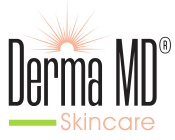Vitamin C
VITAMIN C IS THE MOST ABUNDANT ANTIOXIDANT IN human skin. Despite high doses of oral supplementation, only a small fraction of vitamin C will be biologically available and active in the skin. Therefore, we rely entirely on external supplementation, such as topical application in the case of cosmeceuticals. Vitamin C is essential for collagen biosynthesis and more importantly, it serves as a cofactor for prolyl and lysyl hydroxylase, key enzymes that cross-link and stabilize collagen fibers.
Vitamin C also directly activates the transcription factors involved in collagen synthesis and stabilizes procollagen messenger RNA (mRNA) that regulates Type I and III collagen synthesis. In addition, vitamin C increases the gene expression of collagen and synthesis of the tissue inhibitor of MMP-1, which decreases collagen degradation. A clinical study showed that daily application of three-percent topical vitamin C over a four-month period led to a significant increase in the density of dermal papillae
REFERENCE: Manela-Azulay M, Bagatin E. Cosmeceuticals vitamins. Clin Dermatol. 2009;27:469–474
Zetterströ M R. Nobel Prize 1937 to Albert von Szent-Györgyi: identification of vitamin C as the anti-scorbutic factor. Acta Paediatr. 2009;98(5):915–919.
Farris PK. Cosmetical vitamins: vitamin C. In: Draelos ZD, Dover JS, Alam M, editors. Cosmoceuticals. Procedures in Cosmetic Dermatology. 2nd ed. New York: Saunders Elsevier; 2009. pp. 51–56
Oresajo C, Stephens T, Hino PD, et al. Protective effects of a topical antioxidant mixture containing vitamin C, ferulic acid, and phloretin against ultraviolet-induced photodamage in human skin. J Cosmet Dermatol. 2008;7:290–297.
Lin JY, Selim MA, Shea CR, et al. UV photoprotection by combination topical antioxidants vitamin C and vitamin E. J Am Acad Dermatol. 2003;48:866–874.
Chen L, Hu JY, Wang SQ. The role of antioxidants in photoprotection: a critical review. J Am Acad Dermatol. 2012;67(5):1013–1024.
